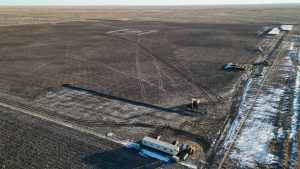Developing valid and enforceable contractual agreements between construction project parties is critical in order for everyone involved to understand their roles and responsibilities.
However, tort law also has a role to play. As described by Westlaw Canada, “the predominant function of tort law is to compensate individuals for loss or injury suffered.”
The issue of tort law in construction recently emerged in connection to a legal action involving the construction of a condominium in Alberta.
Developer JV Somerset completed a 215 unit condominium in 2005. Several years later, deficiencies were discovered in the original waterproof membrane, making the building’s balconies unsafe. The condominium corporation replaced the balconies and sued the developer for the costs. Their claim was framed in tort law as a breach of fiduciary duty.
In response, the developer brought an Application for Summary Judgment on the basis that under Alberta’s Condominium Property Act RSA 2000, their defined role as the developer meant they could not be held liable in tort since they themselves were not involved in the construction.
Michael Gibson and Ryley Schmidt of Miller Thomson LLP write the chambers judge agreed. The judge held that “a developer who is not actively involved in the construction has no duty of care to detect or prevent defects in construction and is not vicariously liable for any breaches by the contractor or subcontracts.”
However, that decision was overturned in May 2022 by the Alberta Court of Appeal.
“The liability in tort of a developer like the respondent for repairing construction deficiencies that pose a real and substantial risk of harm is unclear,” it said. The matter must now go to trial.
In the appeal court’s ruling, reference was made to the “Winnipeg Condominium” dispute several years earlier. There, in 1995, large sections of the building’s exterior cladding fell to the ground. However, it was not the developer but the general contractor and the subcontractors who were sued.
As Gibson and Schmidt describe, the court in Winnipeg “found that a contractor could owe a duty in tort to subsequent purchasers if it could be established that it was ‘foreseeable that a failure to take reasonable care in constructing the building would create defects that posed a substantial danger to the health and safety of the occupants. If the danger actually manifested itself and caused personal injury or damage the contractor would be liable.’”
Back in Alberta, Bennet Misskey and Jodi Wildeman of MLT Aikins LLP note the Alberta Court of Appeal’s decision to send the JV Somerset matter to trial could have important implications.
“The Alberta Court of Appeal commented that if there was sufficient proximity between the contractor and the subsequent owners of the units to establish a duty of care, it is at least arguable that there would have also been sufficient proximity between the developer and the subsequent purchasers. In other words, if contractors owe such a duty, then developers arguably stand in an analogous relationship.”
“Would it be enough for the developer to hire competent and responsible architects and contractors?” Misskey and Wildeman ask. “Must the developer also hire skilled and experienced professionals to monitor the contractor’s work? Is the developer required to actually supervise, monitor or check the contractor’s work for dangerous deficiencies?”
The JV Somerset and Winnipeg Condominium cases demonstrate how much remains unresolved in terms of tortious liabilities involving buildings.
On one hand, Gibson and Schmidt note the Alberta case “serves as a cautionary tale to developers looking to avoid tortious liability for construction defects by never picking up a hammer.”
Misskey and Wildeman meanwhile point to the complexity of the liability question.
“The decision in JV Somerset serves as an important reminder that contractors’ and developers’ liability for construction defects can potentially arise from multiple sources, such as contract, legislation or common law duties in tort, which continue to evolve. The scope of liability is a highly fact-dependent analysis and requires close attention to the law.”
John Bleasby is a Coldwater, Ont.-based freelance writer. Send comments and Legal Notes column ideas to editor@dailycommercialnews.com










Recent Comments
comments for this post are closed